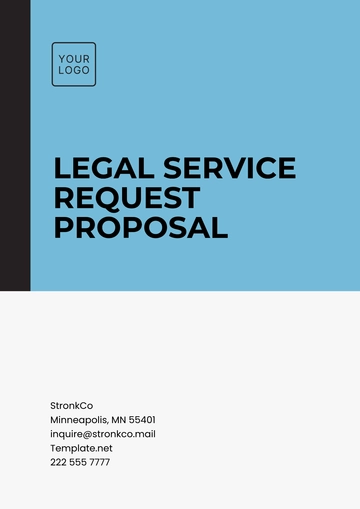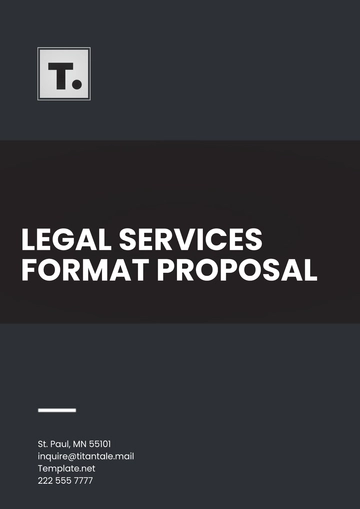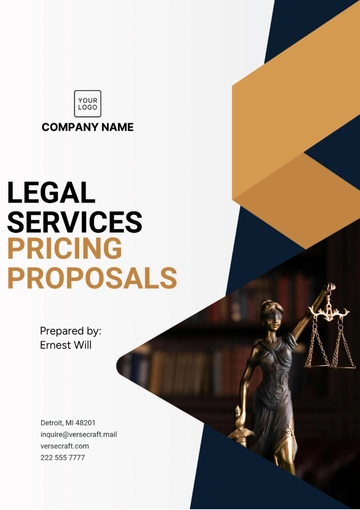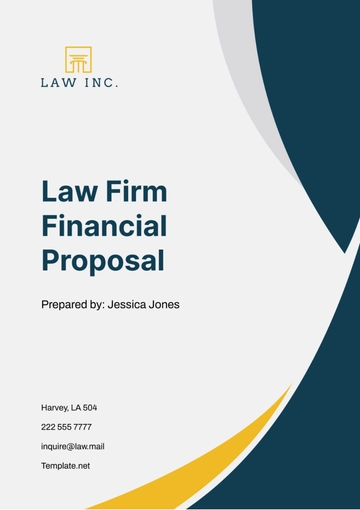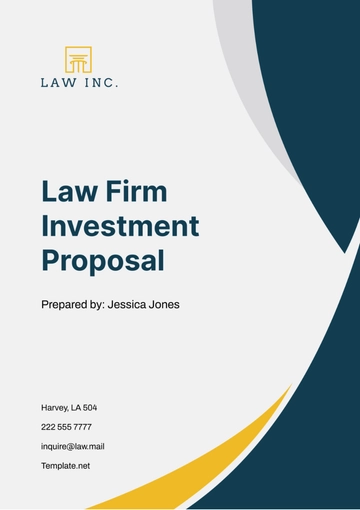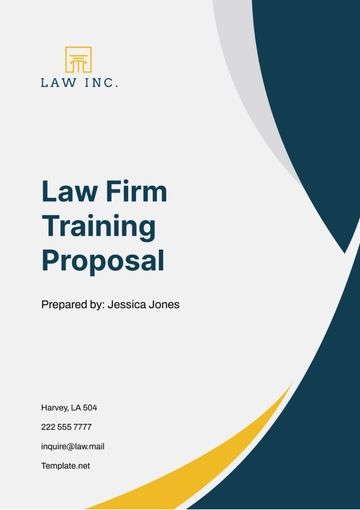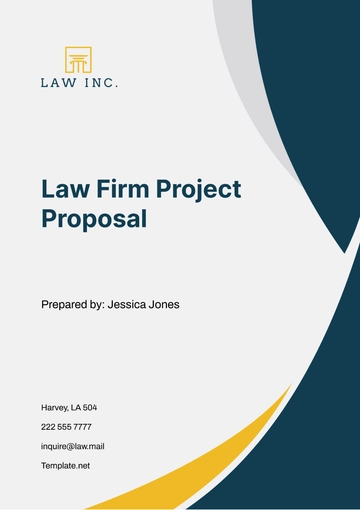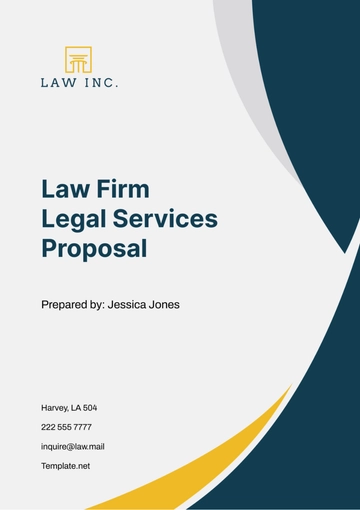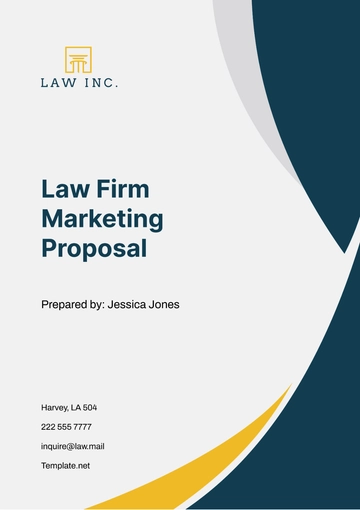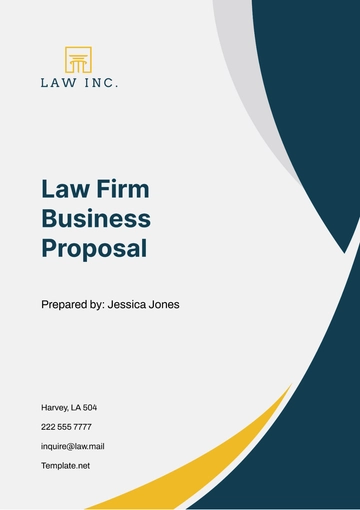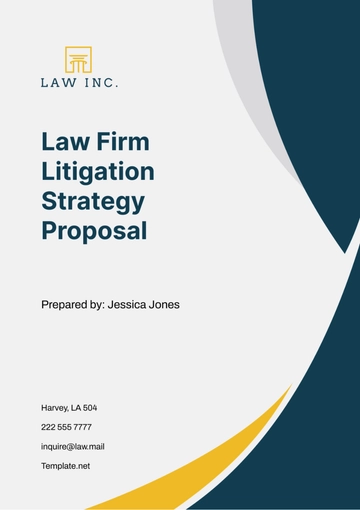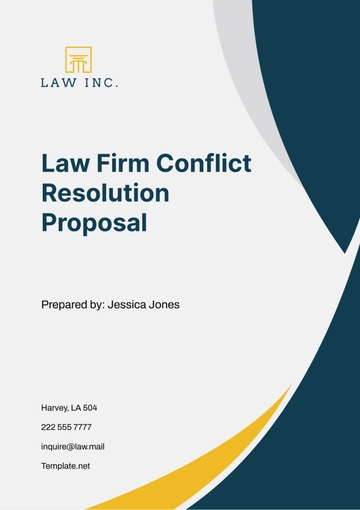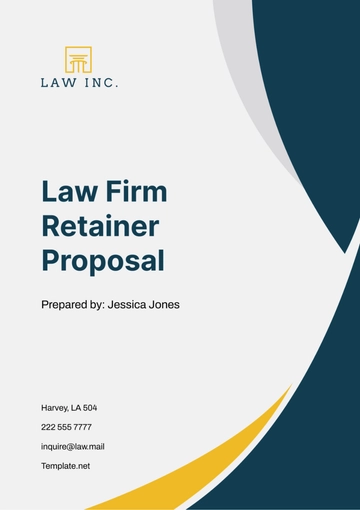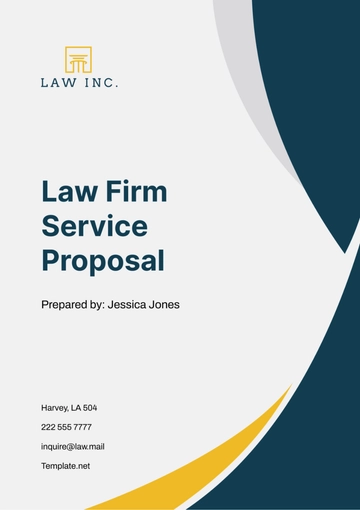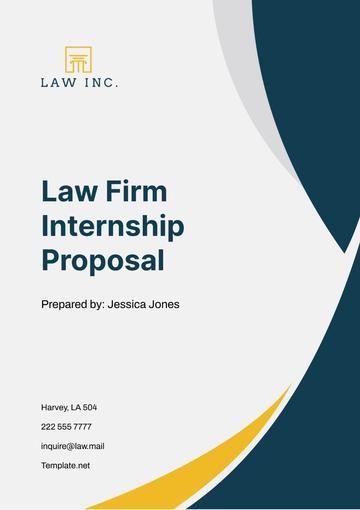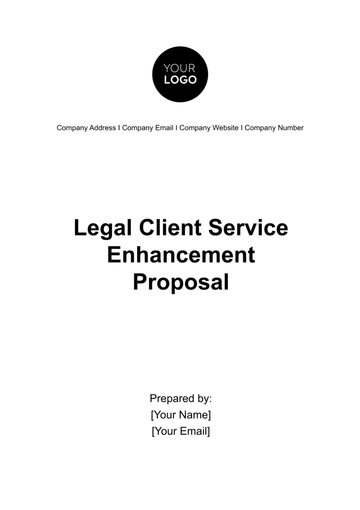Free Legal Client Service Enhancement Proposal
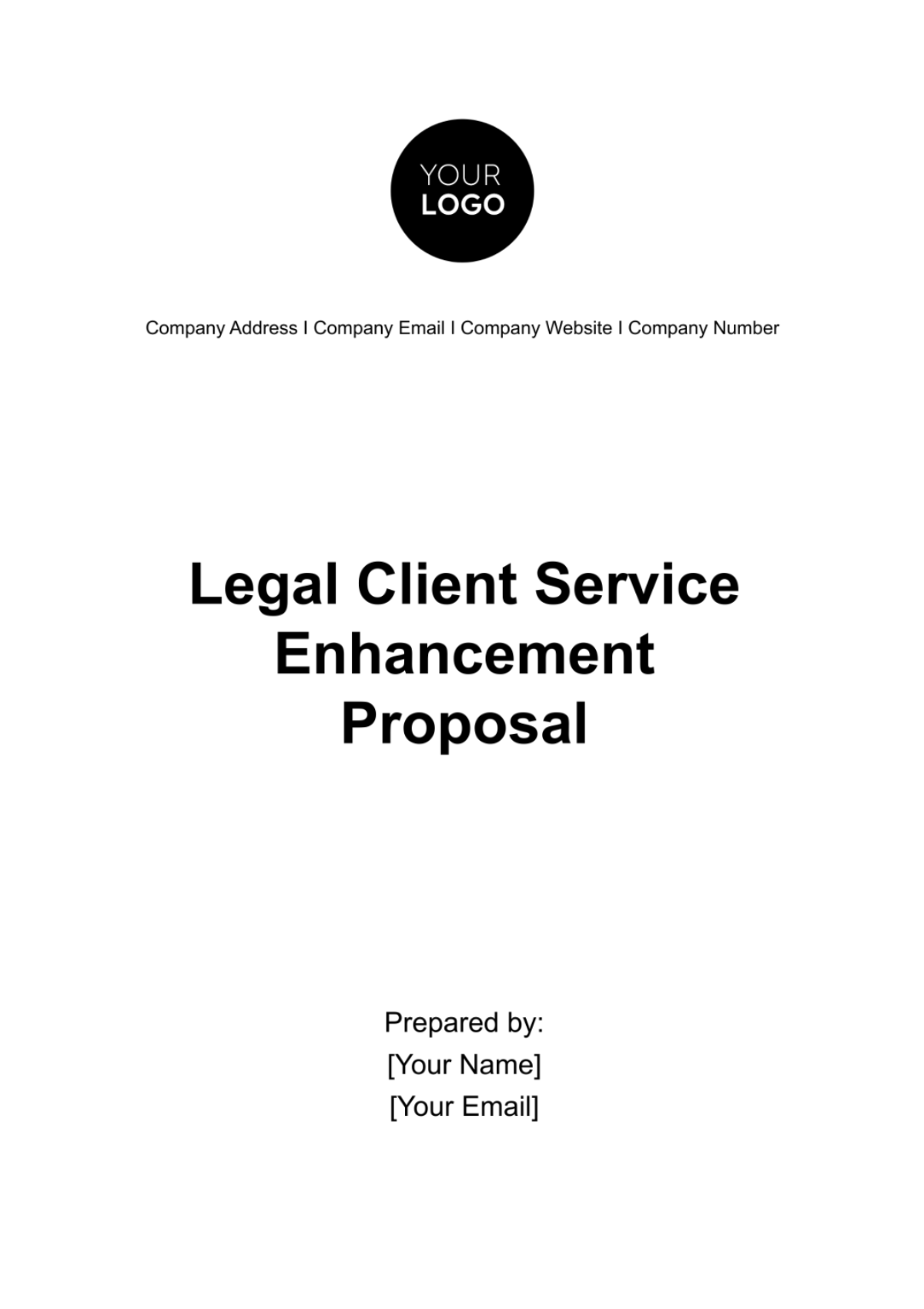
A. Introduction
At [Your Company Name], we hold a steadfast belief in the paramount importance of exceptional client service. Our dedication lies in fostering a culture of continuous enhancement to elevate the quality of our services and, consequently, augment overall client satisfaction. Through this proposal, we articulate our strategic roadmap designed to not only deliver but also sustain superior client services, embodying our unwavering commitment to exceeding client expectations.
In a rapidly evolving legal landscape, we recognize the imperative of staying agile and responsive to our clients' needs. By embracing innovation and leveraging best practices, we aim to fortify our position as a trusted partner, dedicated to providing unparalleled legal services that empower our clients and drive their success forward.
B. Current Client Service Analysis
Through a rigorous examination of our existing practices, we have gained invaluable insights into the strengths that distinguish us and the areas primed for refinement. Our analysis underscores a commitment to fortify our operational strengths and address any inefficiencies with precision and agility. We recognize that a comprehensive understanding of our current service landscape is pivotal in charting a course toward enhanced client satisfaction.
In acknowledging both our successes and opportunities for improvement, we reaffirm our dedication to fostering meaningful client relationships built on trust, transparency, and unparalleled service excellence.
C. Client Feedback Summary
At [Your Company Name], we regard client feedback as an invaluable resource, central to our commitment to continuous improvement. This proposal encapsulates a comprehensive review of clients' feedback, encompassing both commendations and areas warranting attention.
Our analysis delves into the achievements we've garnered as well as the constructive insights provided by our clients, guiding our pursuit of excellence and our unwavering dedication to meeting and exceeding client expectations.
As we navigate the evolving needs of our clients and the dynamic legal landscape, their feedback serves as a compass, steering us toward innovation and refinement in our service delivery.
D. Proposed Service Enhancements
In our pursuit of excellence, we have meticulously crafted targeted enhancements informed by rigorous analysis and invaluable client feedback. Below, we outline strategic measures designed to address identified weaknesses and leverage organizational strengths, ensuring unparalleled service delivery and client satisfaction.
1. Targeted Enhancements
Building upon insights gleaned from our rigorous service analysis and invaluable client feedback, we have devised targeted enhancements aimed at fortifying our service delivery and elevating the client experience.
2. Addressing Identified Weaknesses
By honing in on areas of improvement identified through our analysis and client interactions, we commit to implementing strategic measures to address weaknesses promptly and effectively.
3. Leveraging Strengths
In tandem with rectifying weaknesses, we endeavor to capitalize on our organizational strengths, leveraging them to further enhance our service offerings and deliver exceptional value to our clients.
E. Implementation Plan
In translating our proposed service enhancements into actionable initiatives, we have developed a comprehensive implementation plan. This plan delineates the phased approach, specific action steps, and established timeframes and milestones for seamless execution. Below, we outline our structured strategy for actualizing these enhancements and achieving our service excellence objectives.
1. Phased Approach
Our implementation plan adopts a comprehensive, phased approach to ensure the seamless integration of proposed service enhancements while minimizing disruptions to ongoing operations.
2. Specific Action Steps
Each phase of the implementation process is accompanied by action steps, outlining the specific tasks and responsibilities required to actualize the proposed enhancements effectively.
Conduct staff training sessions on new procedures.
Update internal documentation and protocols.
Implement new software tools for enhanced efficiency.
Assign dedicated personnel to oversee each phase.
Schedule regular progress review meetings.
3. Timeframes and Milestones
We have established clear timeframes and milestones for each phase, allowing for transparent progress tracking and timely completion of implementation objectives.
Phase | Timeframe | Milestones |
|---|---|---|
1 | Month 1 - Month 2 | Staff training completed |
2 | Month 3 - Month 4 | Internal documentation updated |
3 | Month 5 - Month 6 | Software tools fully implemented |
4 | Month 7 - Month 8 | Dedicated personnel assigned |
5 | Month 9 - Month 10 | Regular progress review meetings |
F. Resource Allocation
In order to facilitate the successful implementation of the proposed enhancements, we have allocated a total budget of $25,000. This comprehensive budget encompasses financial, human, and technological resources essential for ensuring a seamless and effective execution.
Resource Type | Allocation |
|---|---|
Financial | $15,000 |
Human | $7,000 |
Technological | $3,000 |
Total | $25,000 |
G. Training and Development
In our pursuit of service excellence, we place a paramount emphasis on training and development initiatives. Our commitment entails ensuring that all staff members possess the requisite skills and knowledge to deliver exceptional services. Through tailored training programs and ongoing professional development opportunities, we empower our team to adapt to evolving client needs and industry standards, thus reinforcing our position as a leader in the legal services sector.
By investing in the continuous growth and enrichment of our workforce, we not only enhance individual competencies but also cultivate a culture of excellence and innovation throughout our organization.
H. Communication Strategy
Effective communication lies at the heart of our client-centric approach. This section outlines our strategy for engaging clients in the enhancement process, ensuring transparency, and fostering ongoing dialogue. Through clear information dissemination and proactive feedback mechanisms, we aim to cultivate a collaborative partnership with our clients, driving mutual understanding and shared success.
1. Client Engagement
Central to our communication strategy is the active involvement of our clients in this transformative process. We are committed to fostering meaningful engagement by soliciting their input, addressing concerns, and ensuring transparency throughout the enhancement journey.
2. Information Dissemination
Our strategy outlines clear channels and methods for effectively communicating the details of the enhancements to our clients, ensuring timely and comprehensive dissemination of information.
3. Feedback Mechanisms
We have established robust mechanisms for soliciting ongoing feedback from our clients, facilitating a continuous dialogue that informs our decision-making and ensures alignment with client expectations.
I. Risk Assessment and Mitigation
Change inevitably brings risks, and it's imperative to anticipate and address them proactively. This section outlines our structured approach to identifying and mitigating potential risks, ensuring a smooth transition as we implement the proposed enhancements.

J. Evaluation and Monitoring
As part of our commitment to ensuring the ongoing success of our service enhancements, we have developed a comprehensive plan for evaluation and client satisfaction monitoring.
1. Effectiveness Evaluation
Conduct regular assessments to measure the impact of implemented enhancements on operational efficiency and client outcomes.
Utilize key performance indicators (KPIs) to gauge the success of each enhancement initiative.
Solicit feedback from internal stakeholders to identify areas for further improvement.
2. Client Satisfaction Monitoring
Implement surveys or feedback mechanisms to gather client perceptions and satisfaction levels post-implementation.
Analyze client feedback to identify trends, concerns, and areas of improvement.
Use client satisfaction metrics to inform future service enhancement strategies and initiatives.
This structured approach to evaluation and monitoring ensures that we remain responsive to client needs and continue to deliver exceptional service.
- 100% Customizable, free editor
- Access 1 Million+ Templates, photo’s & graphics
- Download or share as a template
- Click and replace photos, graphics, text, backgrounds
- Resize, crop, AI write & more
- Access advanced editor
Elevate your law firm's client service with the Legal Client Service Enhancement Proposal Template from Template.net. This editable and customizable template is designed to outline innovative strategies for improving client satisfaction and engagement. Editable in our Ai Editor Tool, it provides a framework for proposing new services, communication improvements, and client relationship initiatives, aiming to enhance the overall client experience and foster long-term loyalty to your legal practice.
You may also like
- Business Proposal
- Research Proposal
- Proposal Request
- Project Proposal
- Grant Proposal
- Photography Proposal
- Job Proposal
- Budget Proposal
- Marketing Proposal
- Branding Proposal
- Advertising Proposal
- Sales Proposal
- Startup Proposal
- Event Proposal
- Creative Proposal
- Restaurant Proposal
- Blank Proposal
- One Page Proposal
- Proposal Report
- IT Proposal
- Non Profit Proposal
- Training Proposal
- Construction Proposal
- School Proposal
- Cleaning Proposal
- Contract Proposal
- HR Proposal
- Travel Agency Proposal
- Small Business Proposal
- Investment Proposal
- Bid Proposal
- Retail Business Proposal
- Sponsorship Proposal
- Academic Proposal
- Partnership Proposal
- Work Proposal
- Agency Proposal
- University Proposal
- Accounting Proposal
- Real Estate Proposal
- Hotel Proposal
- Product Proposal
- Advertising Agency Proposal
- Development Proposal
- Loan Proposal
- Website Proposal
- Nursing Home Proposal
- Financial Proposal
- Salon Proposal
- Freelancer Proposal
- Funding Proposal
- Work from Home Proposal
- Company Proposal
- Consulting Proposal
- Educational Proposal
- Construction Bid Proposal
- Interior Design Proposal
- New Product Proposal
- Sports Proposal
- Corporate Proposal
- Food Proposal
- Property Proposal
- Maintenance Proposal
- Purchase Proposal
- Rental Proposal
- Recruitment Proposal
- Social Media Proposal
- Travel Proposal
- Trip Proposal
- Software Proposal
- Conference Proposal
- Graphic Design Proposal
- Law Firm Proposal
- Medical Proposal
- Music Proposal
- Pricing Proposal
- SEO Proposal
- Strategy Proposal
- Technical Proposal
- Coaching Proposal
- Ecommerce Proposal
- Fundraising Proposal
- Landscaping Proposal
- Charity Proposal
- Contractor Proposal
- Exhibition Proposal
- Art Proposal
- Mobile Proposal
- Equipment Proposal
- Student Proposal
- Engineering Proposal
- Business Proposal
